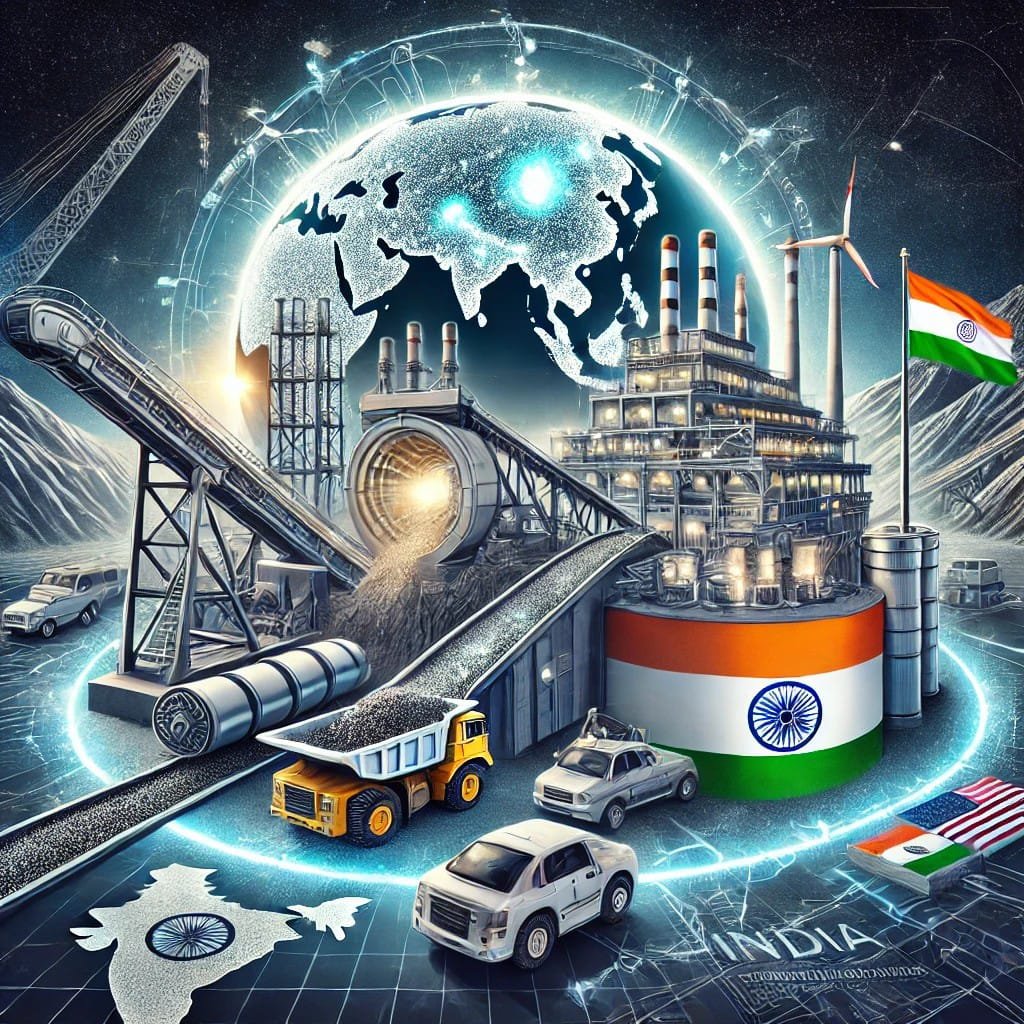
In the high-stakes race for technological supremacy, India is making a bold move to recalibrate its critical minerals strategy. What began as a memorandum of understanding (MoU) with the United States is now poised to evolve into a formidable trade partnership. This transformation isn’t merely about securing essential resources—it is a calculated geopolitical maneuver aimed at cementing India’s role in the global supply chain for electric vehicles (EVs), defense technologies, and advanced electronics.
A Shift from Dependence to Dominance
For decades, China has maintained an iron grip on the global supply of rare earth elements (REEs), controlling nearly 70% of the world’s rare earth mining and 85-90% of the processing capacity. India, however, is determined to break free from this dependency. With vast untapped reserves of 5.9 million metric tons of lithium discovered in Jammu and Kashmir (2023) and an estimated 6.9 million metric tons of rare earth oxides, India is intensifying efforts to refine and process these resources domestically.
The existing agreement with the US, initially framed as a cooperative initiative, is now being redefined into a structured bilateral trade agreement. This strategic pivot will not only bolster India's refining and processing capabilities but also reduce supply chain vulnerabilities that have plagued Western nations amid rising geopolitical tensions. Officials privy to the negotiations confirm that both governments are keen on expediting the agreement, recognizing its potential to reshape the global mineral supply chain.
The US Connection: EV Tax Credits & Beyond
A key driver of this renewed momentum is the US Inflation Reduction Act (IRA), which provides up to $7,500 in tax credits for EVs that source critical minerals from allied nations. India’s mineral processing sector is gearing up to align with this framework, ensuring that its refined minerals qualify for tax credits in the US market. This will significantly enhance India’s attractiveness as a key supplier while simultaneously reducing American dependence on adversarial nations.
Government insiders indicate that ongoing discussions are also exploring a Bilateral Trade Agreement (BTA), which could pave the way for duty exemptions, investment collaborations, and technology transfers. India has already signed critical mineral agreements with Australia (2022) and Canada (2023), and a similar pact with the US could cement its role as a global supplier of lithium, cobalt, and nickel.
Beyond Economics: A Strategic Play
This shift in India’s minerals policy is more than just an economic play—it is a strategic recalibration designed to enhance India’s leverage in global trade negotiations. The Critical Minerals Mission, spearheaded by the government, aims to:
- Fast-track $2.4 billion worth of investments in refining and processing infrastructure.
- Establish domestic capabilities for lithium-ion battery production, reducing the $22 billion import dependency on China for battery components.
- Create joint ventures with US and European firms for mineral exploration and refining.
Meanwhile, the geopolitical implications are profound. Strengthening trade relations with the US in this sector will provide India with a stronger foothold in global supply chains, reducing vulnerabilities in times of international crises. Given the ongoing global realignment of trade blocs, this partnership could mark the beginning of India’s ascent as a dominant force in the mineral’s economy.
Forging the Future
As negotiations move forward, stakeholders from both nations are keen to iron out regulatory concerns, infrastructure bottlenecks, and pricing mechanisms. The potential integration of critical minerals into a broader trade framework could reshape global markets, unlocking opportunities for private sector investments, joint ventures, and cross-border partnerships.
One thing is clear—India is no longer content with being a mere exporter of raw materials. With global demand for lithium projected to rise by 500% by 2050, India is stepping up as a key player in the global technological arena. The nation is ensuring that its vast mineral wealth is not just extracted but utilized strategically to fuel its economic and strategic rise. In the ever-evolving global chessboard of trade and geopolitics, India is making its move, and the world is taking notice.

